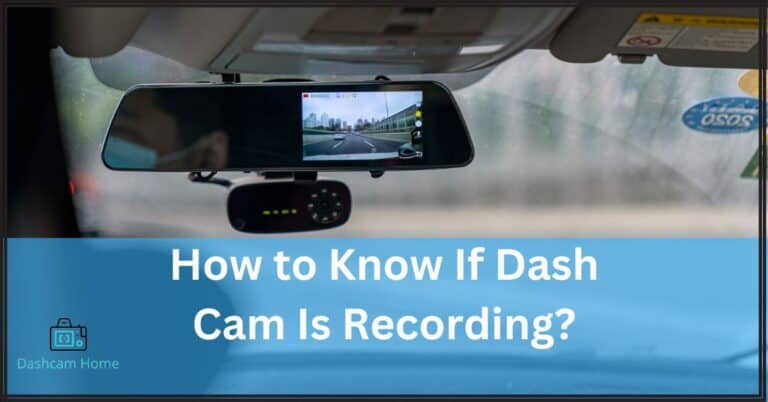Which Fuse to Use for Dash Cam?
Dash cams are becoming more popular because they give drivers peace of mind by recording their journeys and serving as evidence in the event of an accident.
One critical aspect of installing a dash cam is choosing the right fuse. Fuses play an important role in protecting your electrical system by preventing damage from excessive current flow.
In this article, we’ll go over which fuse to use for your dash cam and some common mistakes to avoid. Let’s roll in.
Table of Contents
- Which Fuse to Use for Dash Cam
- Common Mistakes to Avoid
- Understanding Fuses and Their Ratings
- Recommended Fuse Rating for Dash Cams
- Installing the Dash Cam Fuse
- The Bottom Line
- Frequently Asked Questions (FAQs)
Which Fuse to Use for Dash Cam
It is important to understand which fuse to use before installing a dash cam. To find the right fuse for your dash cam, follow these steps:
Checking the Vehicle’s Manual
The first step is to consult your vehicle’s owner’s manual to locate the fuse box and the available fuses. This information may differ depending on the make and model of your vehicle, so follow the manufacturer’s manual.
Calculating the Dash Cam’s Power Consumption
The next step is to figure out how much power your dash cam uses. This information is available on the manufacturer’s website and in the product manual. Most dash cams are designed to run on a 12V power supply and consume between 0.5 and 2 amps of power.
Selecting the Right Fuse
Once you know how much power your dash cam uses, you can choose the appropriate fuse. The fuse rating should be equal to or slightly higher than the dash cam’s power consumption. A 12V dash cam’s recommended fuse rating is usually between 5 and 10 amps.
Installing the Fuse
It is critical to install the appropriate fuse after selecting it. Typically, the fuse box is located beneath the dashboard or in the engine compartment. Remove the old fuse with a fuse puller and replace it with the new one. Make sure the new fuse is securely in place.
Also, see our guide on how dash cam works when car is off to explore how dash cams are powered in detail.
Common Mistakes to Avoid
When it comes to selecting and installing fuses for their dash cam, there are a few common mistakes that people make. These include:
Using a Higher-Rated Fuse
Using a lower-rated fuse may cause it to blow prematurely, resulting in electrical problems or damage to your dash cam. Always use a fuse with a rating equal to or slightly higher than your dash cam’s power consumption.
Using a Lower-Rated Fuse
Using a lower-rated fuse can cause it to blow too quickly, which can lead to electrical issues or damage to your dash cam. Always use a fuse with a rating equal to or slightly higher than the power consumption of your dash cam.
Not Installing a Fuse
Some people may be tempted to forego installing a fuse entirely, particularly if the dash cam is already plugged into the car’s cigarette lighter. However, this can be dangerous because an electrical surge or short circuit can damage your dash cam or electrical system.
Understanding Fuses and Their Ratings
A fuse is a type of safety device that protects your electrical system by breaking the circuit if the current flow exceeds a certain threshold. This prevents electrical component damage and lowers the risk of electrical fires. Fuses come in a variety of types and ratings, including amperage and voltage ratings.
The amperage rating specifies the maximum current that the fuse can safely handle before blowing. The voltage rating specifies the highest voltage that the fuse can safely withstand. It is critical to choose a fuse with the correct amperage and voltage rating for your electrical system.
Recommended Fuse Rating for Dash Cams
A 12V dash cam’s recommended fuse rating is usually between 5 and 10 amps. This is because most dash cams consume between 0.5 and 2 amps of power.
Using a fuse with a rating greater than 10 amps can damage your dash cam or other electrical components while using a fuse with a rating less than 5 amps can cause it to blow too quickly and cause electrical problems.
You should note that the recommended fuse rating may differ depending on the make and model of your dash cam. To determine the appropriate fuse rating, always consult the manufacturer’s website or the product manual.
Installing the Dash Cam Fuse
The dash cam fuse installation is a straightforward procedure. Follow these steps:
- Locate your vehicle’s fuse box. This is typically found beneath the dashboard or in the engine compartment.

- Remove the existing fuse that corresponds to the circuit to which you want to connect your dash cam with a fuse puller.
- Install a new fuse with the correct rating for your dash cam. Check that the fuse is installed correctly.
- Connect the dash cam to the circuit using a fuse tap or other appropriate method.
- Ensure that the dash cam is fully functional.
It is critical to properly install the fuse to avoid electrical problems or damage to your vehicle. If you are unsure about how to install a fuse, consult the manufacturer’s instructions or seek professional guidance.
The Bottom Line
Installing a fuse for your dash cam can be an uphill task, especially if you’re a non-techie. You can take help from this guide to choose the right fuse and install your dash cam.
Although, by watching a few tutorials on YouTube, you can install a fuse yourself. But, if that sounds too confusing, you can get help from a technician.
Also, view our guide on how much is a dash cam to get an idea of dash cam costs.
Frequently Asked Questions (FAQs)
The recommended fuse rating for a 12V dash cam is usually between 5-10 amps, but this may vary depending on the make and model of your dash cam.
The dash cam fuse is plugged into the fuse box in your vehicle. Consult your vehicle’s manual to determine the location of the fuse box.
Because most dash cams consume between 0.5 and 2 amps of power, the recommended fuse rating is usually 5-10 amps.
No, it is important to always use the recommended fuse rating for your dash cam to avoid damaging your electrical system.
Using a lower amp fuse may cause it to blow too quickly, resulting in electrical issues or damage to your dash cam.
Yes, even if your dash cam is plugged into the car’s cigarette lighter, you must still use a fuse. This adds another layer of protection to your electrical system.
Yes, a fuse tap can be used to connect your dash cam to the fuse box. However, it is essential to choose the correct fuse tap and properly install it to avoid electrical problems or vehicle damage.






